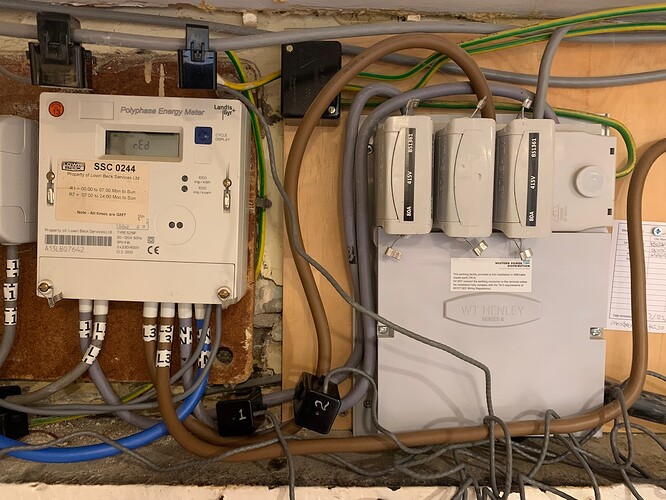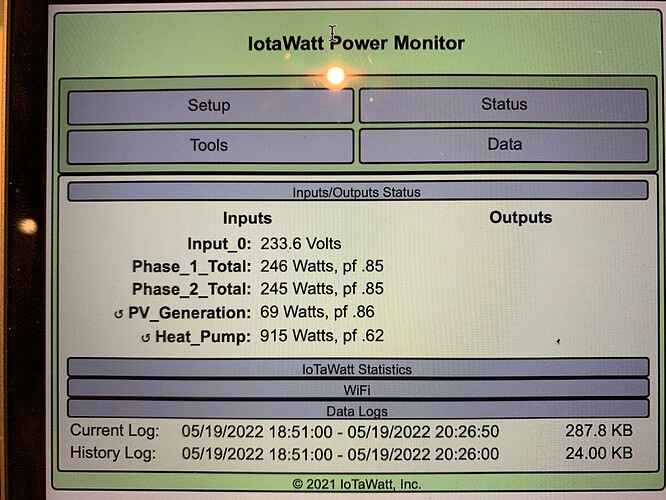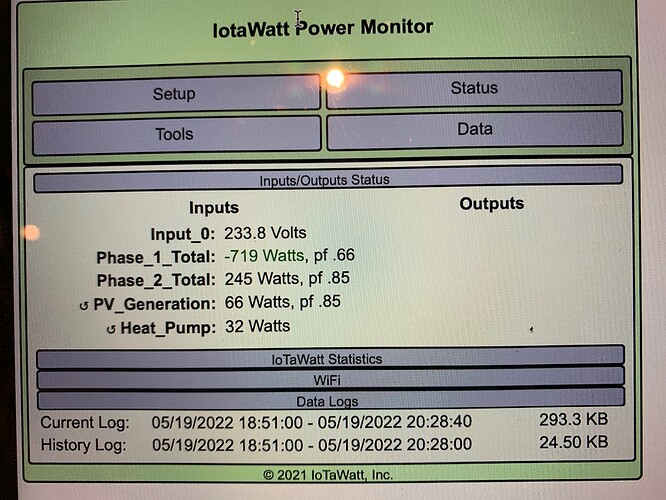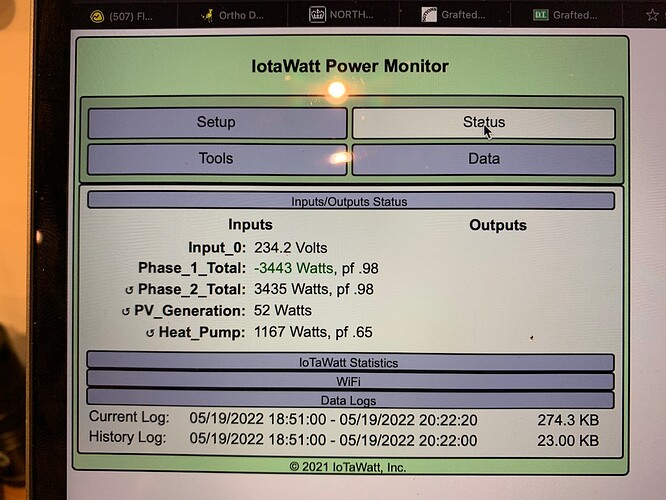Just taken delivery of my iota watt equipment and started setting up. I’m in the UK and have a split phase 240v supply, so 2 x 240v phases, one for the house and one for the farm outbuildings but both going through the same meter.
I’ve configured 4 CT clamps so far as follows:
1: Phase 1 total
2. Phase 2 total
3. PV generation
4. Heat Pump.
The PV is on phase one so CT clamp one is set to allow negative values for when we’re generating more than we use and so are exporting power.
However, no matter what I do, the reading for CT clamp 1 is always negative. I’ve confirmed that it’s the correct way round. I’ve then attached it to the same cable as clamp 2, and it gives an identical positive reading on the phase 2 cable, so the settings seem to be correct.
I turned on the heat pump and the reading became even larger negative values so it wasn’t a case of just having more generation than the PV clamp was telling me. I’m now trying to figure out if there’s something strange in how the meter wiring is working. I’ve attached some photos below.
So this is the main tails coming in, you can see Live 1 and Live 3 labelled going in to the meter. Live 1 is the feed that is always negative.
Here you can see the output with both clamps on the Live 3 cable, both showing the same, positive, value
This is immediately after I moved CT clamps 1 and 2 from the live 3 feed to the live 1 feed, suddenly changes to a negative value, even though the clamp is the same way round and the PV generation is only 66w. Clamp 2 is showing positive because I haven’t set it to allow negative readings but if I set it to allow them, it also shows a negative value.
And finally, turned the heat pump on and it registers a large negative increase so it’s definitely showing the power flowing but in the wrong direction. I’m very puzzled now.
Can any one suggest what’s going on here?



